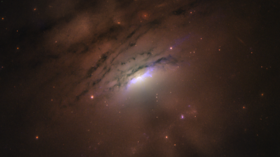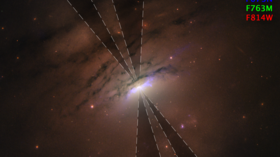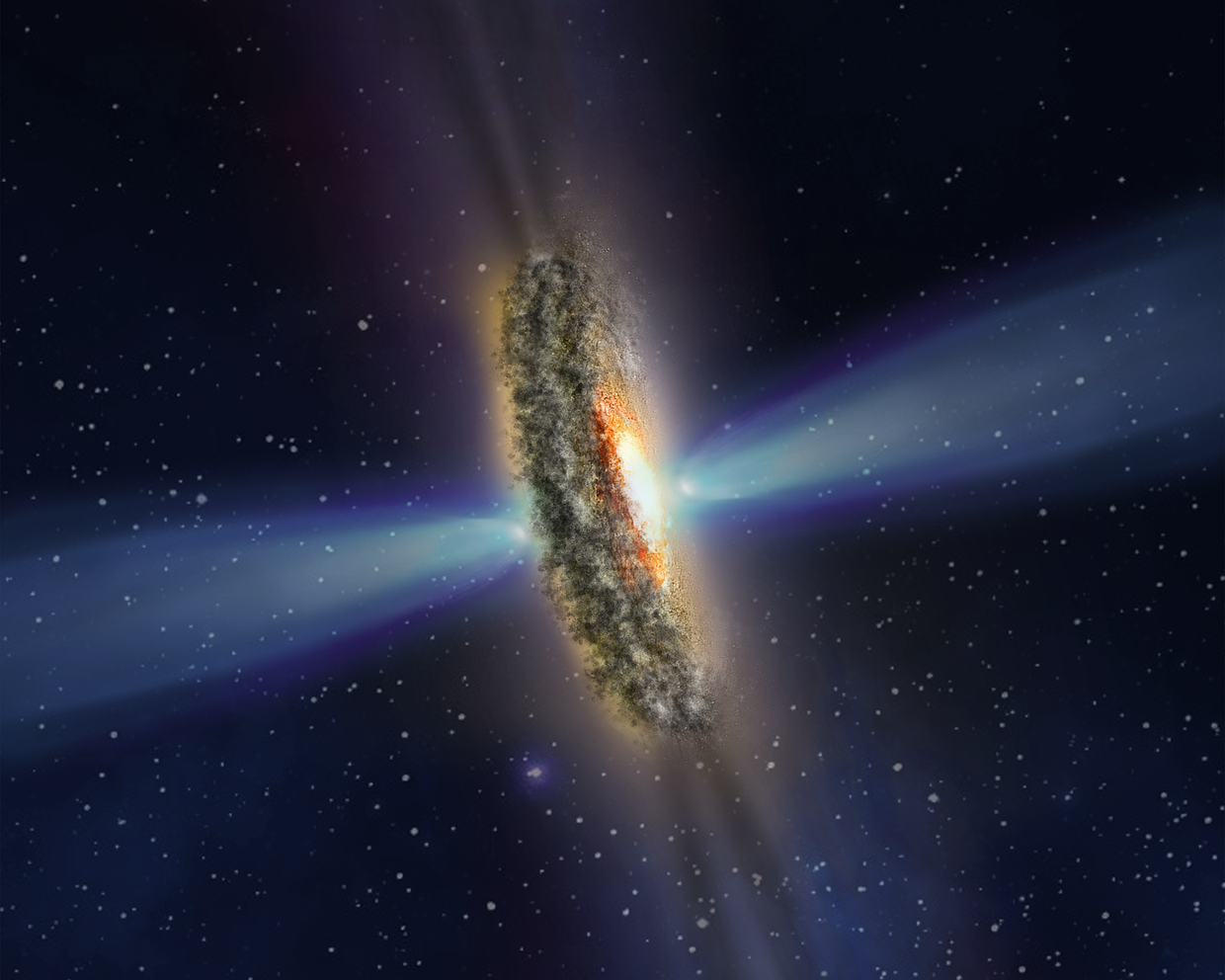Black hole’s structure possibly glimpsed as dust ring casts shadows and rays far across space

Astronomers believe they are getting a glimpse of the structure of a black hole, after the Hubble Space Telescope spotted a collection of rays and shadows beaming out from the center of a galaxy millions of light-years away.
Black holes are the universe’s greatest monsters, rapidly consuming everything in their vicinity. Their gravity is so powerful that not even light can escape them, an extraordinary fact which also makes them invisible to us and thus incredibly hard to study.
However, experts have noticed vast shadows and narrow, bright rays stretching out from the center of the galaxy IC 5063, as if something enormous is standing in the way of the intense light.

Experts believe this could be a black hole in the heart of the galaxy casting its shadow into space, and a quirk of alignment may be allowing them a glimpse of its structure.
Some shafts of light penetrate the gaps in the dust ring, creating bright rays that resemble the beams of light that can be seen radiating from the sun at sunset.
“We think we've found evidence that there is probably dust all over the galaxy scattering light from the accreting black hole in the galaxy's active nucleus, and that the light can illuminate almost the whole galaxy,” explained astronomer Peter Maksym of the Harvard Smithsonian Center for Astrophysics.
Because scientists have never witnessed this phenomenon before, it may take them some time to definitively prove that a black hole is causing the strange shadows and beams. However, the development presents a tantalizing scientific discovery and a rich opportunity for further research.

Like this story? Share it with a friend!














